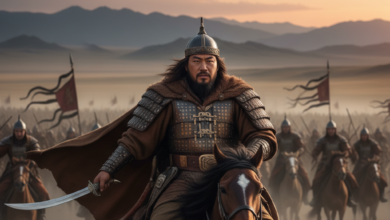Exploring ‘Fire Force’: A Deep Dive into the Popular Japanese Manga Series

Overview of ‘Fire Force’
‘Fire Force’ (En’en no Shouboutai) is a captivating Japanese manga series created by Atsushi Ōkubo, renowned for his previous work on the acclaimed series ‘Soul Eater’. First serialized in Kodansha’s Magazine Pocket in September 2015, ‘Fire Force’ quickly gained popularity for its unique premise, which melds firefighting with supernatural elements, thus offering a refreshing take within the shōnen genre. The narrative unfolds in a world plagued by spontaneous human combustion, where individuals transform into fire-wielding infernals. To combat this phenomenon, special fire brigades termed the ‘Fire Force’ are established, consisting of individuals with pyrokinetic abilities who not only extinguish the flames but also investigate the origins of the phenomena.
This series stands out not only for its engaging storyline but also for its distinct art style. Atsushi Ōkubo’s characteristic use of dynamic character designs and vibrant fire animations enhances the action sequences, drawing the reader into the midst of exhilarating battles. The character development throughout the story is notable, as each member of the Fire Force brings unique abilities and backstories that contribute to the overarching plot while allowing for rich interpersonal dynamics. This craftsmanship has positioned ‘Fire Force’ as a leading title within the manga community, attracting a diverse readership.
When compared to other popular series in the same field, such as ‘My Hero Academia’ and ‘Demon Slayer’, ‘Fire Force’ brings a unique combination of heartfelt moments, humor, and intense action, cementing its status in contemporary manga culture. The blend of supernatural horror with a traditional firefighting theme allows ‘Fire Force’ to explore deep philosophical themes while keeping the content accessible and entertaining. As a result, it has not only seen significant commercial success but has also inspired an anime adaptation, further broadening its audience.
Plot and Themes
‘Fire Force’ presents a compelling narrative centered around Shinra Kusakabe, a young firefighter endowed with the unusual ability to ignite his feet at will. His extraordinary powers set him apart as he strives to become a hero in a world plagued by spontaneous human combustion, which transforms individuals into monstrous beings known as Infernals. These terrifying adversaries pose a significant threat to humanity, prompting the formation of Special Fire Force Companies tasked with combating this phenomenon. Shinra’s journey begins with his recruitment into Special Fire Force Company 8, where he seeks to uncover the mysteries behind his family’s tragic past and his personal aspirations for heroism.
The narrative unfolds across various story arcs, showcasing intense battles against Infernals and the enigmatic Apostles of the Evangelist. These encounters reveal not only the physical challenges Shinra and his comrades face but also the philosophical dilemmas surrounding the use of their powers. As the story progresses, readers witness Shinra navigating his insecurities, the expectations of his peers, and the darker motivations of those he must confront.
Beyond action-packed sequences, ‘Fire Force’ explores profound themes such as heroism and fear. It poses critical questions regarding the nature of heroism; what defines a true hero in circumstances fraught with chaos? The series also emphasizes the importance of camaraderie among the members of Company 8, showcasing how their collective strength can overcome even the greatest obstacles. Moreover, moral implications are examined as characters grapple with the responsibilities that come with power, reflecting on how fear can motivate or hinder one’s actions. This intricate weave of plot and themes ultimately lends ‘Fire Force’ its depth, inviting readers to reflect on their interpretations of courage and the human condition.”
Character Development and Relationships
The Japanese manga series ‘Fire Force’ presents a richly woven tapestry of character development and relationships that plays a crucial role in the storytelling process. Central to this narrative is Shinra Kusakabe, a young firefighter with a unique ability to ignite his feet. Throughout the series, viewers witness Shinra’s evolution from an insecure boy seeking recognition to a confident and driven hero who aspires to save humanity. His journey is intertwined with the dynamics between him and his colleagues, making their relationships foundational to the plot’s progression.
Among his companions, Arthur Boyle serves as an interesting foil to Shinra. Both characters share a passionate drive to become an exceptional firefighter, yet their contrasting personalities—Shinra’s determination versus Arthur’s often comical bravado—highlight the theme of rivalry and camaraderie. Their competitive banter not only adds humor but also fosters a bond that exemplifies the spirit of teamwork essential in their perilous profession. This relationship underscores the idea that friendship is often forged in the heat of battle.
Equally important are characters such as Iris and Maki, each bringing their own unique backgrounds and motivations into the mix. Iris, as a nun with a deep commitment to saving souls, introduces themes of hope and faith, while Maki embodies strength and resilience within a male-dominated space. These female characters are crucial as they demonstrate that bravery and leadership are not confined to traditional gender roles. Their interactions with Shinra further develop the overarching themes of loyalty and personal growth, as they encourage him to embrace his identity and abilities.
Through these diverse relationships, ‘Fire Force’ intricately ties character development to the narrative, making emotional investment in the story natural and compelling. The interplay between friendship, rivalry, and loyalty resonates deeply with viewers, creating an engaging and relatable experience that enhances the series as a whole.
Cultural Impact and Adaptations
Since its inception, ‘Fire Force’ has emerged as a significant cultural phenomenon both in Japan and internationally. Originating as a manga series created by Atsushi Ōkubo, it captivated audiences with its unique blend of supernatural elements and engaging storytelling. The successful transition from manga to anime adaptation further amplified its reach, achieving widespread acclaim. The anime version, produced by David Production, debuted in July 2019, quickly gaining a substantial viewer base and securing its place within the hearts of fans.
The adaptation not only maintained the original’s dynamic art style and character-driven narrative but also introduced the series to a wider audience. Following its release, ‘Fire Force’ garnered positive reviews for its visuals, action sequences, and soundtrack, drawing in both dedicated fans of the manga and newcomers alike. This followed a pattern seen with other adaptations, highlighting the potential for such series to expand their influence significantly.
Merchandising has played a crucial role in solidifying the cultural impact of ‘Fire Force.’ The availability of action figures, apparel, and collectibles has allowed fans to express their passion for the series in tangible ways. Moreover, fan engagement through online communities and conventions has fostered a sense of belonging among enthusiasts, demonstrating the series’ profound effect on the fandom landscape.
Additionally, ‘Fire Force’ has left a mark on contemporary manga and anime trends. Its exploration of themes such as camaraderie, sacrifice, and the struggles against self-identity resonates deeply in today’s culture. Furthermore, the series’ integration of modern issues and unique character portrayals continues to inspire fellow creators, helping to shape the next generation of manga and anime. As it persists in captivating audiences worldwide, ‘Fire Force’ is poised to establish a legacy that will influence the industry for years to come.






















